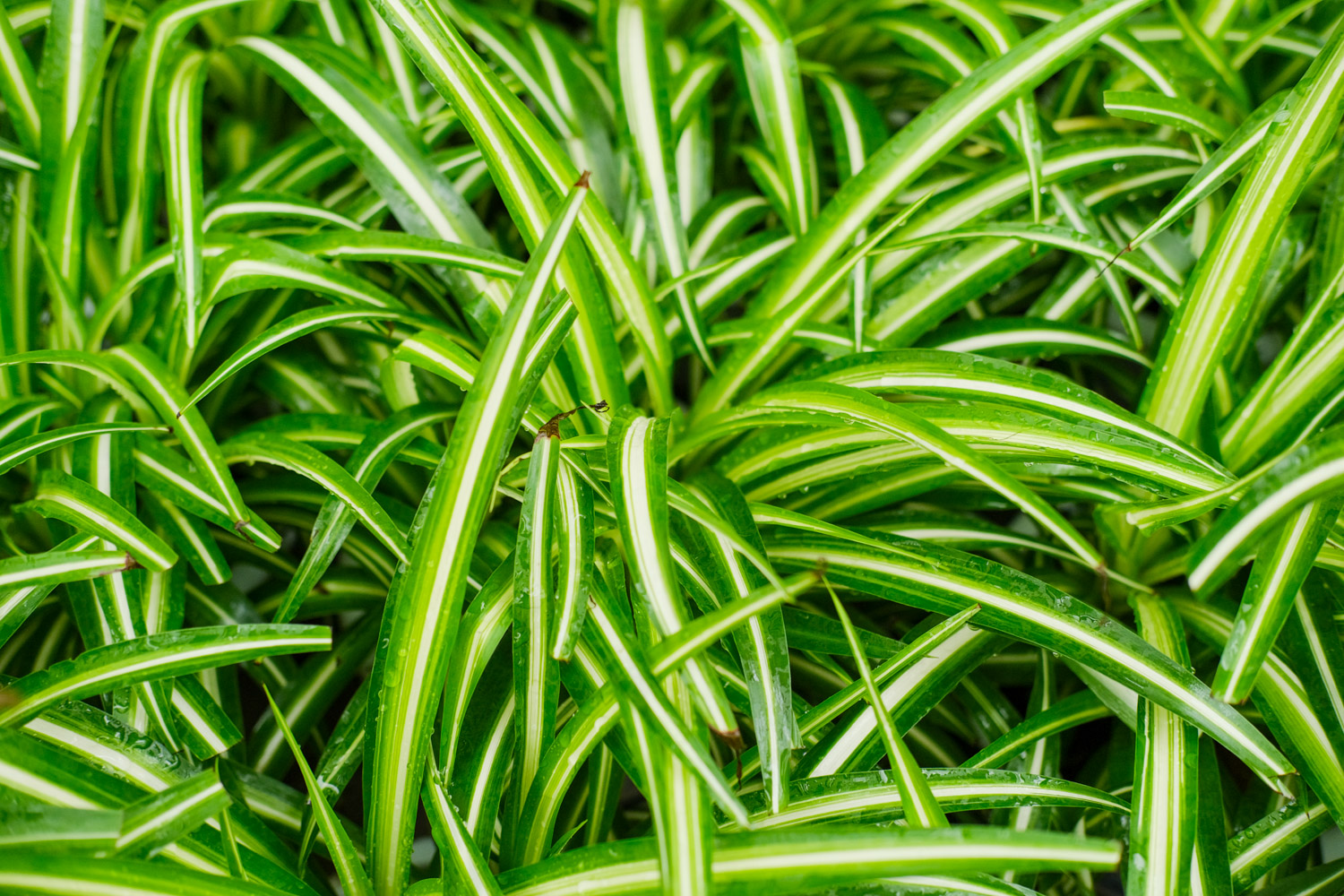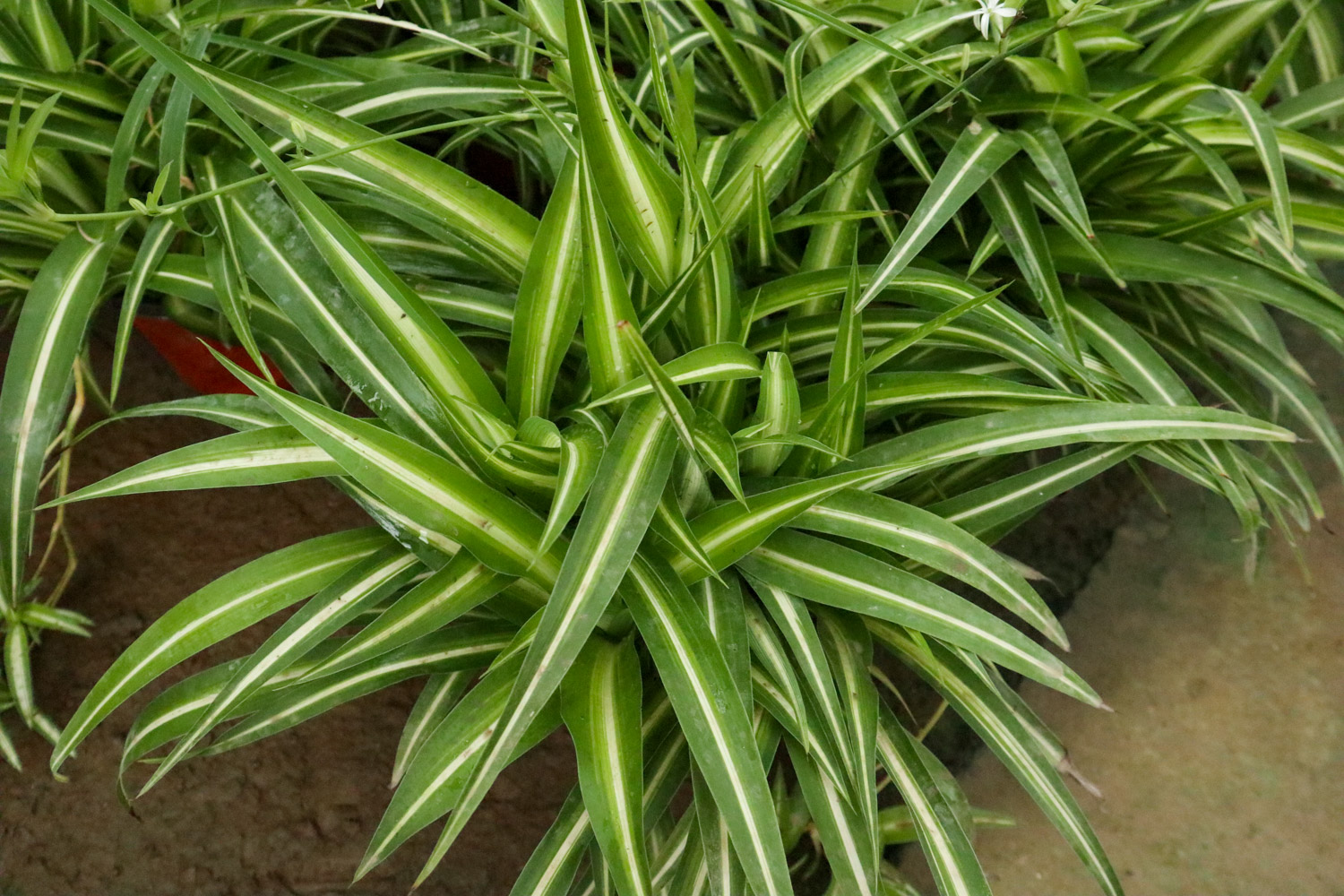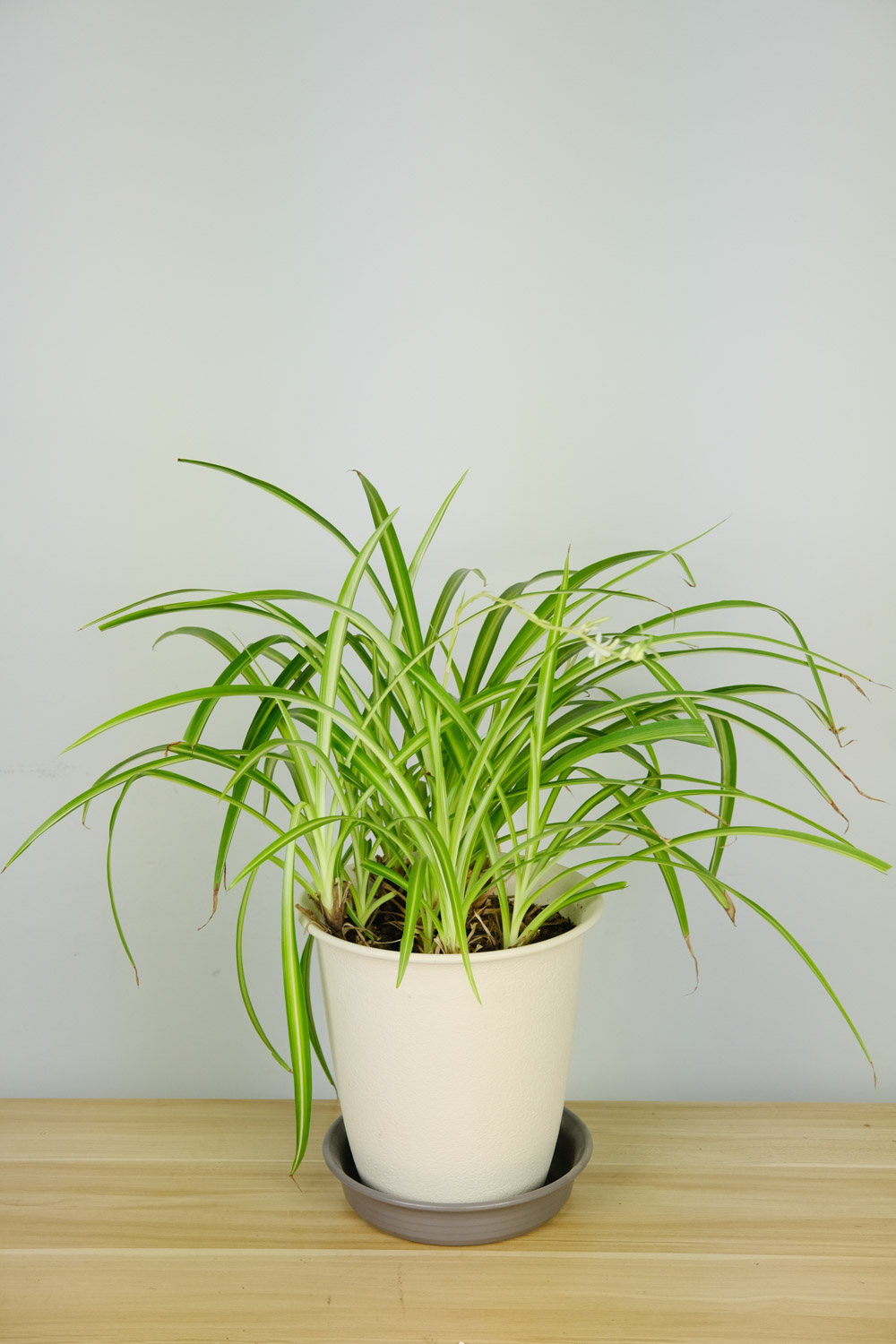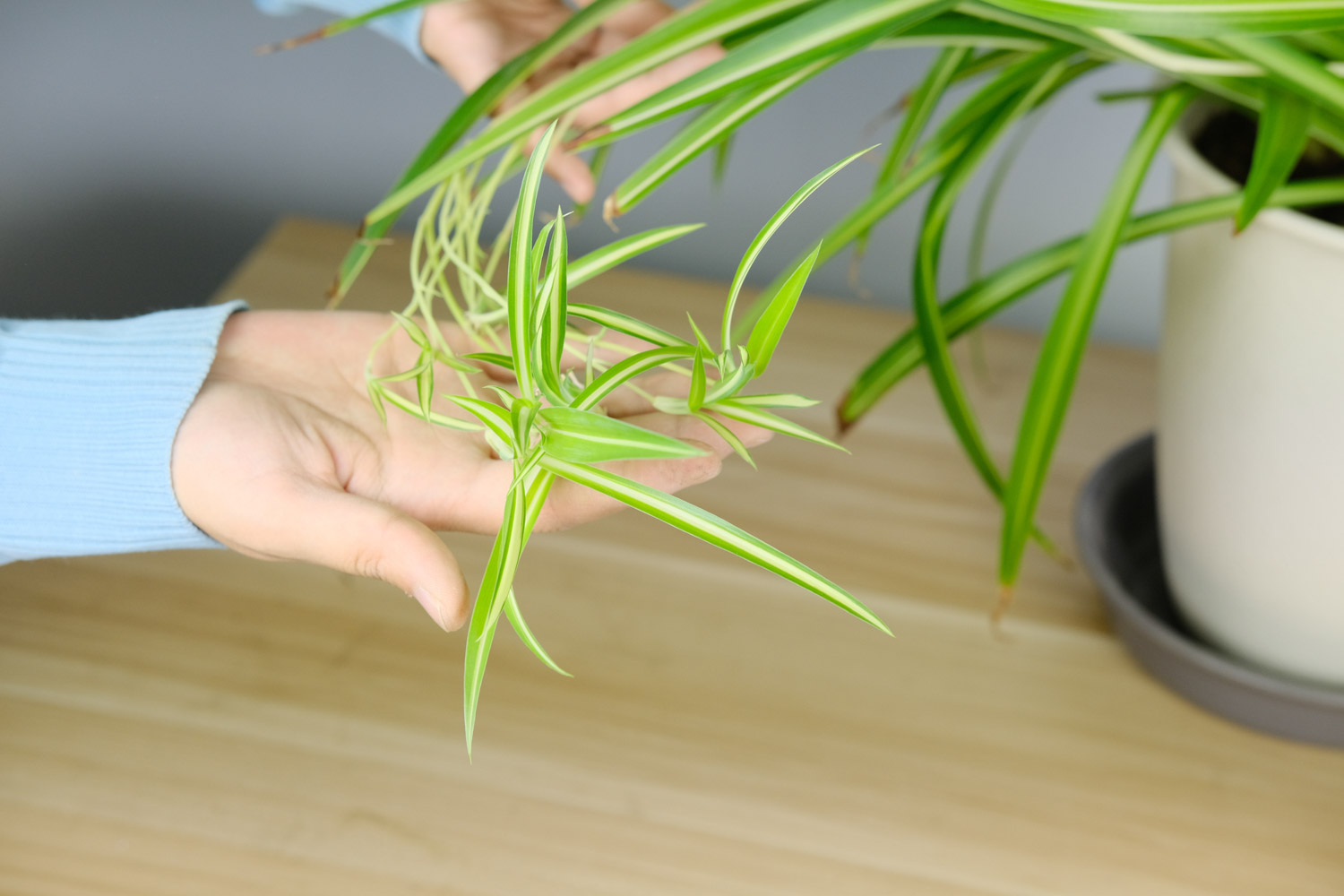1、 Soil
Chlorophytum has low requirements for soil, and the general garden soil can basically meet the needs. However, if it can be maintained with soft, breathable, fertile and slightly acidic soil, its growth will be more vigorous. When preparing soil, it is recommended to mix garden soil, rotten leaf soil and river sand in the proportion of 4:4:2. Alternatively, peat soil, rotten leaf soil, river sand and perlite can be mixed in the proportion of 4:3:2:1. The prepared soil can only be used after disinfection in advance
2、 Illumination
Chlorophytum likes semi shade environment and is not sun resistant. It has certain shade resistance. It should block strong light in time during maintenance to avoid sunburn. It's best to put it in a place with bright indoor light and bask in the sun in the morning and evening to meet the demand for light. In summer, the strong light must be blocked and not exposed to the sun, otherwise it is easy to get sunburned

3、 Temperature
The growth of Chlorophytum has certain requirements for temperature. It neither likes high temperature nor has high cold resistance. Therefore, pay attention to temperature control during maintenance, especially the high and low temperature in summer and winter. In summer, it needs to be moved to a cool and well ventilated environment, and water should be sprayed frequently to help cool down. It is best to control the temperature below 28 degrees. In winter, it should be moved indoors, especially in the northern areas. The indoor temperature should be controlled above 10 degrees, so that it can survive the winter better. Be careful not to get too close to the heating. At ordinary times, it is best to provide a temperature between 15 and 28 degrees, which is most conducive to growth
4、 Watering
Chlorophytum likes humid environment and has certain drought tolerance. However, for its more vigorous growth, if it is found that the soil is dry, it should be watered to make the soil moist. Especially in the peak growth season, there should be no water shortage, otherwise it is easy to have yellow leaves. The amount of water should be well controlled. It doesn't like waterlogging and can't have ponding. If the climate in the area is relatively dry, you not only need to water it regularly, but also need to spray water frequently to improve the humidity. The specific watering times are determined according to the season. In spring and autumn, it is generally watered once every three or four days. In summer, it is basically watered every day. In winter, it is necessary to control the water at low temperature. It can only be watered when it is dry

5、 Fertilization
In order to promote the more vigorous growth of Chlorophytum, it needs topdressing in the peak growth season. Choose urea fertilizer or rotten organic fertilizer, which can promote better germination of leaves. When applying fertilizer, it is recommended to dilute the fertilizer and then irrigate the fertilizer solution. The growing season is usually topdressing once every 20 days. It is necessary to stop fertilizer in time after winter to avoid fertilizer damage
6、 Change Basin
The growth rate of Chlorophytum is relatively fast. It needs to change the basin once a year or two to meet its demand for space. Changing the basin regularly can also avoid soil hardening. Basin changing time is generally selected in spring and autumn. Cut off water in advance to facilitate basin removal. After removing the pot, it is necessary to prune the roots, cut off the old roots, rotten roots and sick and weak roots, and disinfect them, so that the Chlorophytum can better absorb fertilizer and water in the later stage. The flowerpot should be prepared with slightly larger soil, which can be prepared according to the above method. After preparation, plant Chlorophytum directly into the soil, water it in time, and maintain it in a warm, ventilated and semi shady place, which will soon return to normal growth

7、 Pest control
During the maintenance of Chlorophytum, if there is too much watering and poor ventilation, it is easy to be infected with insects. The common pests include scale insects, whiteflies, aphids, etc. Scale insects can be sprayed with 1500 times of 50% malathion or 3000 times of 2.5% deltamethrin; Bemisia tabaci can be sprayed with carbendazim wettable powder 500-800 times to irrigate the roots, once a week, 2-3 times in a row; Aphids can be killed by spraying 1500 times Omethoate
8、 Breeding method
1. Cutting method: cutting can be carried out in spring, summer and autumn. Cut the small Chlorophytum germinating from Chlorophytum for cutting. Prepare a soft and breathable matrix, directly insert the small Chlorophytum into the matrix, pour water, and maintain it in a cool, ventilated and warm environment. The survival rate is very high
2. Dividing method: when dividing plants, take the Chlorophytum out of the flower pot, remove the old soil, cut the old roots to ensure that there are three stems on the divided plants, and then plant and maintain them separately
3. Sowing method: Chlorophytum is usually sown around March in spring. The sowing method is very simple. Directly sprinkle the Chlorophytum seeds on the soil surface, cover the thin soil, and spray water to moisturize. After sowing, it is necessary to provide an environment of more than 15 degrees, so that seedlings will germinate and emerge in about two weeks

What about yellow leaves of Chlorophytum
1. Timely replenishment of water: the yellowing of Chlorophytum leaves is likely to be caused by the lack of water. It likes humid environment and has poor drought tolerance. If it forgets to water for a long time and can't absorb water, it is easy to have yellow leaves. Watering and moisturizing treatment shall be carried out in time. Once the soil is dry in the peak growth season, water it to avoid yellow leaves
2. Reasonable temperature control: the yellow leaves of Chlorophytum may also be frostbitten due to too low temperature. It has poor cold resistance and low temperature after winter, so temperature control measures must be taken. It should be moved to a heated room and the temperature should be controlled above 10 degrees
3. Proper shading: Chlorophytum is shade resistant and not sun resistant. Its yellow leaves may also be sunburned by too much light. It must be shaded in time, or it must be moved to a cool and ventilated place and sprayed with water appropriately to promote its growth as soon as possible
Main varieties of Chlorophytum
1. Chlorophytum: its leaves droop and its color is dark green. It usually blooms between June and July every year. The designs and colors are light yellow and white
2. Chlorophytum Phnom Penh: the leaf edge of Chlorophytum Phnom Penh is yellow. Its variety can be distinguished from its leaf color
3. Chlorophytum with silver edge: the leaf edge of Chlorophytum with silver edge has white painted edge, which is more obvious
4. Purple Chlorophytum: the branches and culms of purple Chlorophytum are in node shape, and each node has leaves. Its petioles are purplish red, and its leaves are thick and shiny. It usually blooms from June to October every year, and the flower color is pink
5. Chlorophytum: the branches and stems of Chlorophytum become tendrils, and the branches and leaves droop. The leaf is peach shaped, the edge of the leaf has golden patterns, and passes through the center of the leaf vein. The back of the leaf is purple and gives off light

 how many times do yo...
how many times do yo... how many planted tre...
how many planted tre... how many pine trees ...
how many pine trees ... how many pecan trees...
how many pecan trees... how many plants comp...
how many plants comp... how many plants can ...
how many plants can ... how many plants and ...
how many plants and ... how many pepper plan...
how many pepper plan...


























